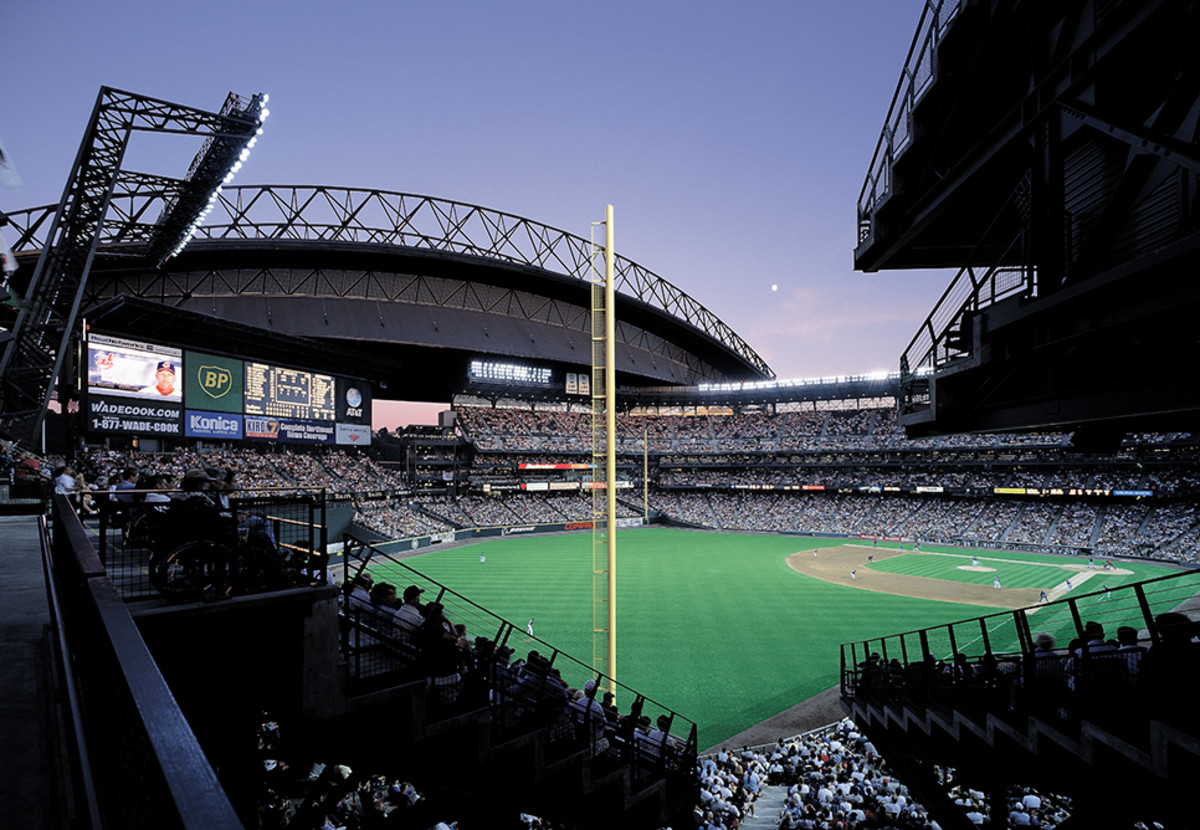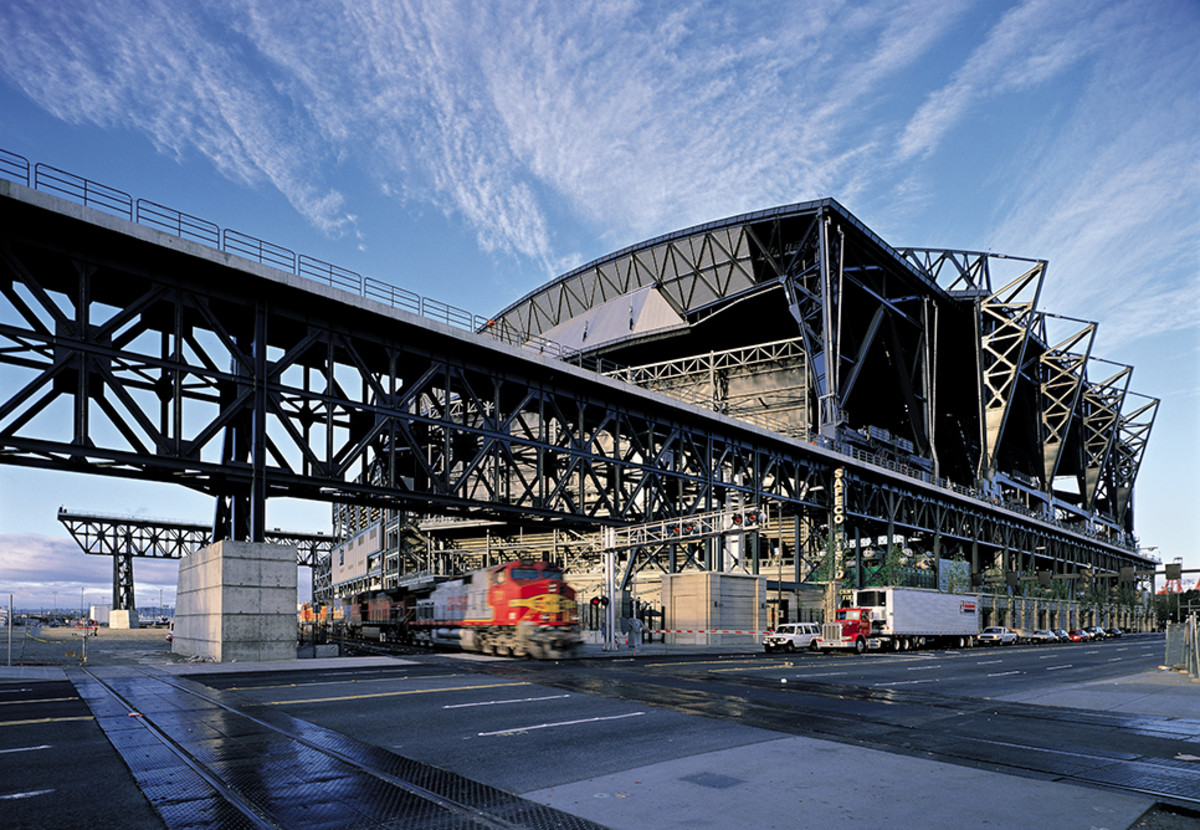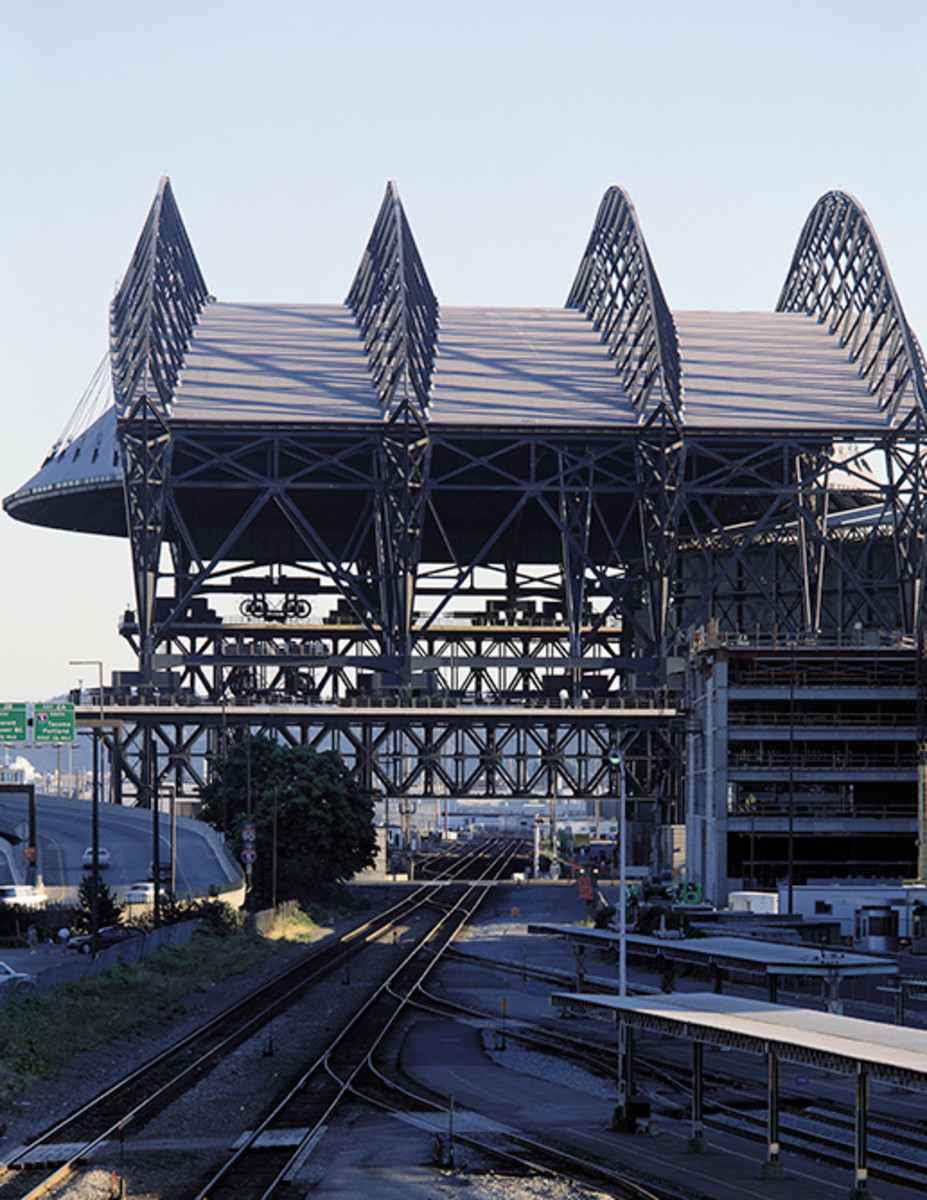Ballpark Quirks: Safeco Field has its very own umbrella for rainy Seattle

Ballpark Quirks: Safeco Field has its very own umbrella for rainy Seattle

Photos courtesy of NBBJ


Ballpark Quirks is a series on the distinctive features and oddities that make up each of MLB’s 30 parks. Today’s Pick: Safeco Field's umbrella roof. For past stories in the series, click here.
Seattle gets plenty of rain, so it proves only fitting that the city’s baseball team plays in the only North American stadium fitted with an umbrella.
When designing Safeco Field and preparing it for its 1999 opening, NBBJ architect Dan Meis, now with Woods Bagot, had to give the field—and fans—protection from the rain, but move the roof design and interior stadium ambiance as far away from a Kingdome-esque feeling as a Ken Griffey Jr. home run blast.
“The technology of retractable roofs was pretty novel at the time,” Meis told SI.com. “There had been a few. With Safeco, the realization early on was whether it rains or not, (a roof) protects the ability to sell season tickets. It was seen as pretty critical.”
But in no way could designers create a heavy, ominous dome, especially given the countrywide success of the new style of open parks at the time and the local fans’ collective understanding of the concrete monstrosity that was the Kingdome. Couple those cultural persuasions with a goal of fitting Safeco into the historical context of neighboring Pioneer Square, and for Meis, the question became: “Can you do this big roof and not make it feel like this giant monster?”
Cue the umbrella.
“I think (the roof) is really unique, more like an umbrella,” he said. “You can really put it away.”
But part of what makes the nine-acre, 22-million-pound steel roof seem not so daunting was stadium placement. The final site selection near Seattle’s industrial port and adjacent to a bevy of working train tracks was not only necessitated by the roof, but also led the design of the roof.
With the large port cranes nearby, designers wove that industrial theme into the three-paneled roof aesthetic and used the open space above the BNSF Railway tracks as a place to slide and stack the roof, a luxury not often available in urban locations. While a small portion of the roof still hovers over the far rightfield seats, the roof itself—on 128 steel wheels powered by electric motors—neatly tucks away atop the tracks, allowing trains to pass below while whistling their presence.
Most retractable roofs serve to seal a building and guarantee an interior temperature, but in Seattle, the purpose of the roof was solely about protecting the field from rain. With that point in place, the umbrella-styled design let architects create more open areas to see in and out of the ballpark to let fresh air freely waft through the stadium and make the roof feel less like a hulking object.
Safeco Field may still have oceans of steel atop its seating bowl when the rain comes, but none of it feels dome-y. Instead, the field and fans stay dry, enjoy the natural temperature and can put the roof away when not needed. Just like they do with their umbrellas.
Tim Newcomb covers stadiums, design and gear for Sports Illustrated. Follow him on Twitter at @tdnewcomb.
